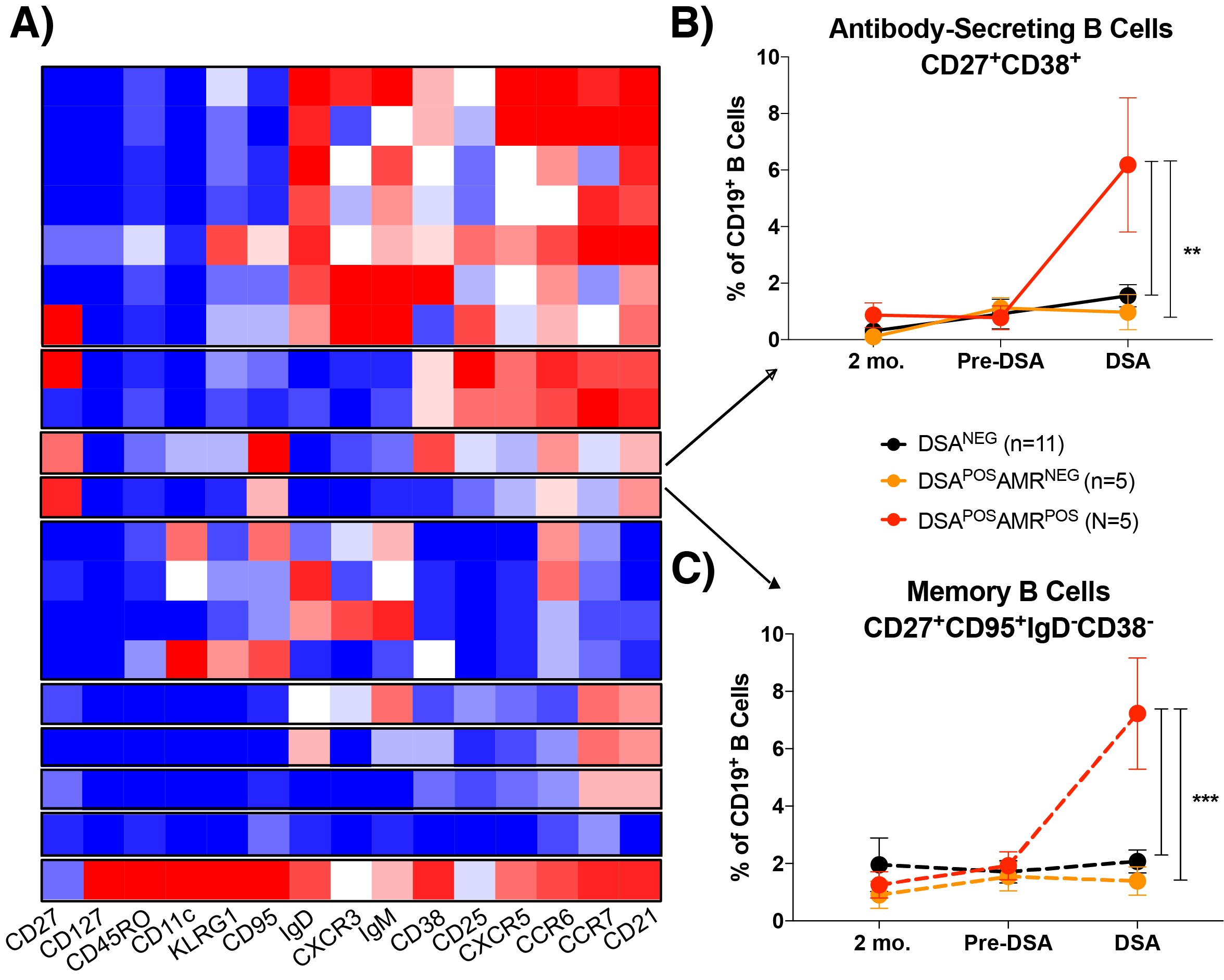CyTOF and RNAseq Analyses Unravel Early Phenotypic and Transcriptional Changes in Antibody-Secreting and Memory B Cells >1 Year Prior to Antibody-Mediated Rejection
1Department of Medicine, Icahn School of Medicine at Mount Sinai, New York, NY, 2Department of Medicine, Northwestern University, Chicago, IL, 3Department of Medicine, IRCCS Istituto G. Gaslini, Genoa, Italy, 4Department of Medicine, IRCCS San Matteo Hospital, Pavia, Italy, 5Department of Urology, Children's Hospital Los Angeles, Los Angeles, CA
Meeting: 2019 American Transplant Congress
Abstract number: 259
Keywords: Antibodies, B cells
Session Information
Session Name: Concurrent Session: Biomarkers, Immune Monitoring and Outcomes II
Session Type: Concurrent Session
Date: Monday, June 3, 2019
Session Time: 2:30pm-4:00pm
 Presentation Time: 3:42pm-3:54pm
Presentation Time: 3:42pm-3:54pm
Location: Room 306
*Purpose: While the negative impact of anti-HLA donor specific antibodies (DSA) on graft outcomes has been extensively investigated, little is known about early changes in the transcriptional profile and phenotype of circulating B and T cells before DSA development.
*Methods: We performed time-of-flight mass cytometry (CyTOF) and RNAseq on prospectively collected PBMC from pediatric kidney transplant recipients who developed (n=10) or did not develop (n=11) DSA within the first year after transplantation. PBMC were obtained at 2 months post-transplant, 3 months prior to DSA development, and at first DSA detection (PBMC from DSANEG controls were collected at the same time-points).
*Results: DSAPOS and DSANEG patients had similar baseline characteristics and comparable B and T cell frequencies across the different time-points. Within DSAPOS patients, only those that went on to develop antibody-mediated rejection (AMR; n=5) had increased B cells with an antibody-secreting phenotype (CD27+CD38+, Figure 1A, B p=0.0042) and a memory phenotype (CD27+CD95+IgD–CD38–, Figure 1A, C p=0.0005) compared to DSANEG and DSAPOSAMRNEG recipients at the time of DSA detection. RNAseq analyses revealed differences in transcriptional programs involved in immunoglobulin formation and B cell activation (Gene Ontology enrichment) between DSANEG and DSAPOS patients at 3 months prior to DSA development, specifically in antibody-secreting B cells (CellCODE analysis). There was no difference in DSA titers between patients who developed AMR and those who did not (13,687±4,159 vs. 11,375±1,894 MFI, respectively; p=0.63).
*Conclusions: Our extensive CyTOF phenotypic and transcriptional analysis shows that circulating memory and antibody-secreting B cells expand and initiate a specific transcriptional profile months prior to the development of DSA and >1 year prior to biopsy-proven AMR.
Figure 1. Increased antibody-secreting and memory B cells detected in DSAPOS AMRPOS recipients by CyTOF. A) B cells from all patients were pooled together and 20 subclusters identified by Phenograph using 15 cellular markers (shown below heatmap). Heatmap of normalized marker expression across the 20 Phenograph B cell subclusters. B) Frequency of CD27+CD38+ antibody secreting cells and C) CD27+CD95+IgD–CD38– memory B cells at serial time points after transplant stratified by DSA and AMR status. Plots show mean ± SEM. *p < 0.05, **p < 0.01 and ***p<0.001.
To cite this abstract in AMA style:
Fischman C, Fribourg M, Ansari J, Gallon L, Ginevri F, Comoli P, Cioni M, Nocera A, Bruschi M, Cantarelli C, Perin L, Cravedi P. CyTOF and RNAseq Analyses Unravel Early Phenotypic and Transcriptional Changes in Antibody-Secreting and Memory B Cells >1 Year Prior to Antibody-Mediated Rejection [abstract]. Am J Transplant. 2019; 19 (suppl 3). https://atcmeetingabstracts.com/abstract/cytof-and-rnaseq-analyses-unravel-early-phenotypic-and-transcriptional-changes-in-antibody-secreting-and-memory-b-cells-1-year-prior-to-antibody-mediated-rejection/. Accessed December 29, 2025.« Back to 2019 American Transplant Congress

